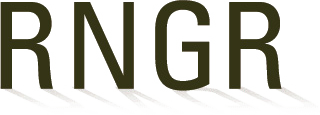
Amaranthus (pumilus)
|
Shelby J. French Propagation Manager Mt. Cuba Center 3120 Barley Mill Road Hockessin, Delaware 19707 302 239 8819 302 239 5366 (fax) sfrench@mtcubacenter.org http://www.mtcubacenter.org/ |
|
| Family Scientific Name: | Amaranthaceae | ||
|---|---|---|---|
| Family Common Name: | Amaranth family | ||
| Scientific Name: | Amaranthus pumilus | ||
| Common Name: | seaside amaranth | ||
| General Distribution: |
Historically found along coastline from Southern Massachusetts to South Carolina. Now only extant populations can be found along coasts of North Carolina, South Carolina, Maryland, Delaware, New York (Long Island), New Jersey, and Virginia. |
||
| Propagation Goal: | Seeds | ||
| Propagation Method: | Seed | ||
| ProductType: | Container (plug) | ||
| Stock Type: | 7.6 cm (3 in) pot, seed collected from 2-3 month old plants | ||
| Time To Grow: | 6-8 weeks | ||
| Target Specifications: | mature plant to use for seed collecting | ||
| Propagule Collection: |
"Seed collecting from greenhouse grown plants is typically August and September. Occasional collection begins in July and will extend into October. Collection occurs 3 time a week from the same plants. Flats are tilted sideways and shook for seed to drop onto large paper. It is helpful to gently tease seed from plants mechanically, but only what easily falls from inflorescences and is not forcefully removed. Seeds are dark reddish brown in color, very shiny, slightly oval in shape, 2.5mm. 3.54 grams equals 1,300 seed. " |
||
| Propagule Processing: |
"Seed is hand cleaned using Fischer Scientific sieve numbers 12 and 14. Seed is placed in sieve and rubbed gently with a flat object to breakup debris and seed covering." |
||
| Growing Area Preparation/ Annual Practices for Perennial Crops: |
"Seed is allowed to fall into pea gravel of greenhouse benches each year from stock plants. Watering of pea gravel begins in May in appropriate sites; seedlings emerge each May. They are watered 2-3 times weekly in the benches." |
||
| Establishment Phase: |
"Seedlings emerge mid-May. When approximately 5 cm (2 in) tall seedlings are transplanted into 7.6 cm (3 in) pot using a well-drained media, generally the end of May or early June. A basic potting media with added horticulture grade perlite at 30-50% works well. No supplemental fertilizer is added beyond the amount in the media." |
||
| Length of Establishment Phase: | 3-4 weeks | ||
| Active Growth Phase: |
Plants are well rooted after 6-8 weeks and kept in a greenhouse during warm summer months. Temperatures fluctuate from 15-37˚C (60-100˚F). |
||
| Length of Active Growth Phase: | 4-5 months | ||
| Harvesting, Storage and Shipping: | Cleaned seed is stored cool and dry, 1-3˚C (34-38˚F) in paper and placed in a plastic storage tote. | ||
| Other Comments: |
"Global Heritage Status Rank G2; National Heritage Status Rank N2. Seed is collected annual for conservation efforts. Seed banked Ames, Iowa with the University of Iowa Agriculture Research Station: 2009, 2011, 2017." |
||
| References: |
Weakley, A. S. (2015) Flora of the Southern and Mid-Atlantic States. Retrieved from http://www.herbarium.unc.edu/FloraArchives/WeakleyFlora_2015-05-29.pdf Flora of North America. (2004) Amaranthus pumilus. Retrieved from http://www.efloras.org/florataxon.aspx?flora_id=1&taxon_id=242415669 Lady Bird Johnson Wildflower Center. (2013) Amaranthus pumilus. Retrieved from https://www.wildflower.org/plants/result.php?id_plant=AMPU2 Center for Biological Diversity. (n.d.) Seabeach amaranth. Retrieved from https://www.biologicaldiversity.org/campaigns/esa_works/profile_pages/SeabeachAmaranth.html U.S. Fish and Wildlife Service New Jersey Field Office. (2018) Seabeach Amaranth. Retrieved from https://www.fws.gov/northeast/njfieldoffice/endangered/amaranth.html |
||
Citation:
French, Shelby; Kniola, Ryan. 2020. Propagation protocol for production of Container (plug) Amaranthus pumilus Seeds 7.6 cm (3 in) pot, seed collected from 2-3 month old plants; Mt. Cuba Center Hockessin, Delaware. In: Native Plant Network. URL: https://NativePlantNetwork.org (accessed 2025/11/04). US Department of Agriculture, Forest Service, National Center for Reforestation, Nurseries, and Genetic Resources.



